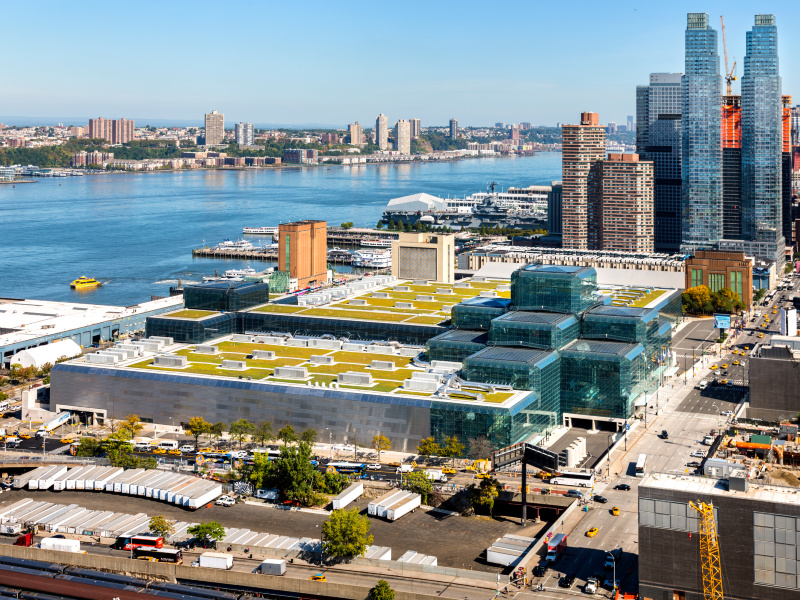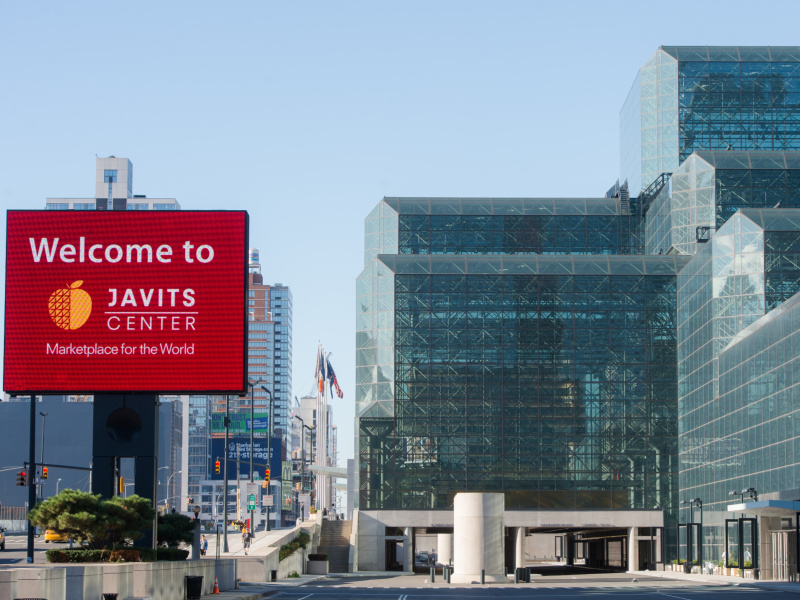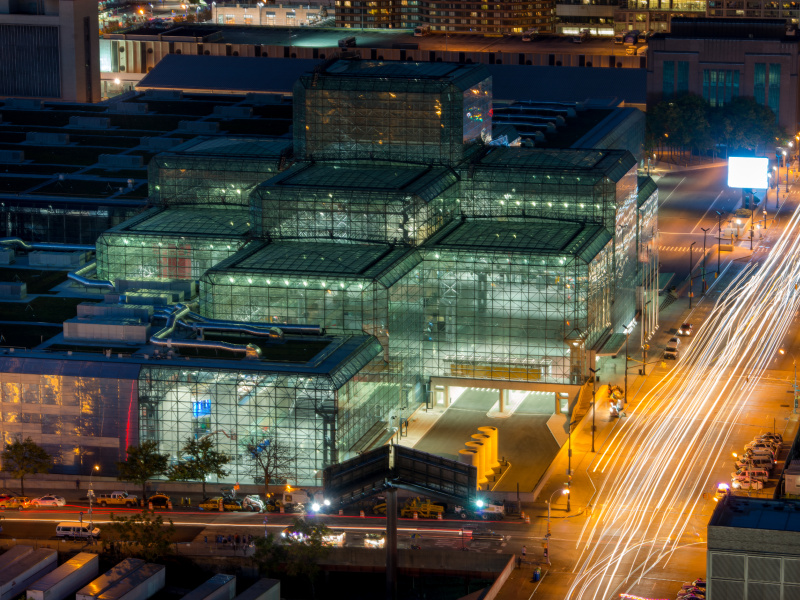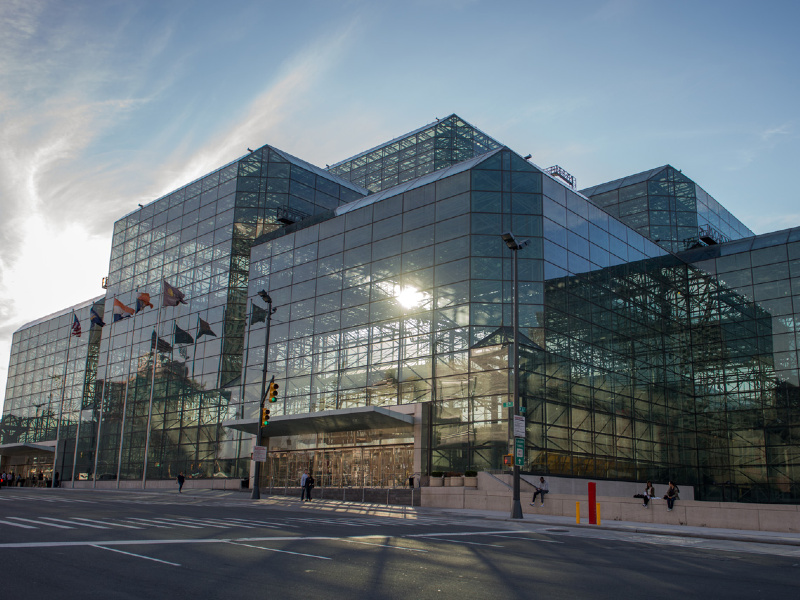The expansion of the Jacob K Javits Convention Center was completed with an estimated investment of $1.5bn. Located in Manhattan, New York, US, the facility is one of the busiest convention centres in the US.
The expansion project added a new meeting room and ballroom space, new loading docks, and an exhibition hall. It builds on a previously completed renovation of the convention centre, which added a new façade, flooring, and a 6.75-acre green roof. The project was aimed at attracting significant events and conventions while improving operational efficiency and reducing traffic congestion.
Ground-breaking for the expansion took place in March 2017 and the project was completed in May 2021. The rooftop farm and event space were completed in September 2021.
The expansion project created more than 3,000 construction jobs and could generate 6,000 permanent jobs. It is expected to boost the hotel and tourism industry in the region by generating $400m in economic activity.
Jacob K Javits Convention Center expansion details
The expansion project added 90,000ft² of new exhibition space which, combined with the existing space, created 500,000ft² of contiguous space. The project also added more than 200,000ft² of meeting room and pre-function space, in addition to the 54,000ft² special event space.
The project also included the construction of a four-level truck marshalling facility or garage, which includes 27 new loading docks capable of holding 229 trucks.
The garage enables the rerouting of 20,000 annual event-related trucks off public streets, thereby improving traffic flow, air quality, and pedestrian safety. It also reduces the number of truck trips by 50%, providing the centre with 20 additional days for new events.
A 200,000ft² rooftop has been developed, which includes a glass-enclosed pavilion, an outdoor terrace, and a one-acre working farm. The farm can produce up to 40,000lbs (18,143kg) of fresh produce for on-site consumption using recycled water.
A green roof terrace, capable of hosting 1,500 people for outdoor events, has also been developed. The terrace will provide stunning views of the Hudson River and enable the centre to diversify the types of events hosted.
Additional facilities include new kitchen and food service spaces, as well as administrative space.
Construction of the Jacob K Javits Convention Center expansion
Early construction works, including foundation and utility works, commenced in December 2016. Six giant caissons were drilled to support the foundation system of a three-storey transformer building, which supplies power to the expanded facilities.
The building accommodates transformers, backup generators, and other electrical equipment. The first phase of construction was developed in the existing transformer yard of the centre.
It comprises a structural steel frame with elevated and enclosed platforms. The building floors were made of concrete slabs resting on a metal deck, supported by steel beams.
The transformer building’s roof was fitted with a horizontal canopy featuring green-screen elements and planters. Acoustic panels were added to reduce rooftop noise along the north edge of the roof.
Construction works commenced on the transformer building following the ground-breaking in March 2017.
Sustainability features in the Jacob K Javits Convention Center
The developers aimed to achieve LEED Silver Certification for the expansion project but were able to exceed that goal and achieve LEED Gold Certification.
The construction materials were carefully chosen to include characteristics of sustainability including high recycled content, and locally sourced and sustainably harvested wood. More than 75% of all the construction waste generated during the construction was diverted from landfills to be reused or recycled.
The project including the installation of 3,000 solar panels on the existing and expanded rooftops of the convention centre. The solar panels will generate 1.7MW of energy and are accompanied by a 3.5MW battery storage system, which will supply more than 2GWh of clean energy annually.
Two underground cisterns were also installed as part of the project, which will capture and treat rainwater to be used for irrigation on the roof, and reduce the amount of potable water needed for irrigation by 50%.
Funding for the Jacob K Javits Convention Center
Funding for the expansion was provided through a state appropriation of $1bn, cash available on hand, and proceeds from bond issues.
Contractors involved
The expansion project has been designed by a collaboration of architecture firms, led by Tvsdesign, along with Moody Nolan, Stantec, and WXY Studio. The rooftop pavilion was designed by WXY Studio while Stantec designed the green spaces on the rooftop, as well as the new plaza and sidewalks.
A joint venture of construction firms Lendlease and Turner Construction was contracted to undertake the construction of the expansion project.
Landscape architecture firm SiteWorks Landscape Architecture offered landscape architectural services for the project while waterproofing and roofing products provider American Hydrotech supplied waterproofing and roofing solutions for the rooftop garden.
Engineering firm Avcon Engineering was selected for the design of the electrical and sprinkler systems for the truck marshalling facility at the convention centre. Technology company Siemens designed and constructed the rooftop energy project.
Consulting firms Group PMX and Tishman Construction, and Lehrer provided programme management and programme controls services for the project while law firm Hawkins Delafield & Wood served as the owner’s counsel for the project.
Design and construction company Epstein, and architecture and interior planning firm FXCollaborative formed a joint venture, called Javits II Architecture, to provide planning, programming, and preliminary design services for the project.
Rooftop farming Brooklyn Grange served as the consultant for the rooftop farm and will also operate the farm.
Structural and civil engineering consulting firm Magnusson Klemencic Associates designed the truck marshalling building while structural engineering firm Casco Bay Engineering served as the subconsultant to the company.







